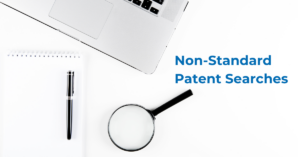Chaim Stepelman
Director of Patent Searches, Azami
A patentability search is a crucial step in determining whether or not to file a patent application. Without identifying relevant prior art, one risks wasting time and money in the patent examination process.
However, just as important as the search itself is the patentability search report. A well-prepared search report must include specific features to be effective.
Here are the essential features that must be included in a patentability search report:
- List of the inventive elements searched
The report should include a comprehensive list of the inventive elements that were searched. This will help the client understand which parts of their invention were searched and which were not. It also ensures that the searcher understood the key aspects of the invention.
- Brief summary of references in order of relevance
The search report should have a summary of the references in order of relevance. This will allow the client to quickly identify the most relevant references. The summaries should be concise but informative, providing key information about each reference.
- Search data, including databases used
The report should also include information about the search data, including the databases that were used, types of literature searched (patent, non-patent), and limitations of search years if any. This helps the client understand the scope of the search and the sources of the prior art.
- Table of concepts and keywords searched
A valuable patentability search report should include a table of the keywords and concepts that were searched. This will show the client how the inventive elements were translated into search terms, and whether the proper synonyms and alternative word usages were used in the search.
- Detailed summary of patent and non-patent references including text citations
The search report should also include a detailed summary of the patent references, including text citations. This will enable the client to quickly understand the key information about each reference. The summary should include information about the patent number, the inventor, the date of the patent, and the key elements of the invention. If the reference is non-patent literature, then the summary should include information about the author, the date of publication, and the key elements of the invention.
- Representative drawings
When relevant, the search report should include representative drawings. This will show the relevance of the prior art better than the descriptive text. As the saying goes, “a picture is worth a thousand words.”
- Classification Codes used
Finally, the search report should include information about the classification codes that were used. This will help the client understand the prior art more clearly and enable them to search for additional prior art using these codes if desired. The report should include information about the classification system used and the codes that were searched.
The objective of the search report is to enable the client to understand what was done in the search and why the results are relevant. Although these elements are not set in stone, they are the most effective in transmitting the necessary information to a client about the search and the results.
By including these features, a patentability search report will be a valuable document that will help the client make informed decisions about the patent filing process.
Looking for a reliable patent search service? Visit our patent search webpage to learn more about our services and how we can help you with your patentability search needs: https://azamiglobal.com/patent-searches/




